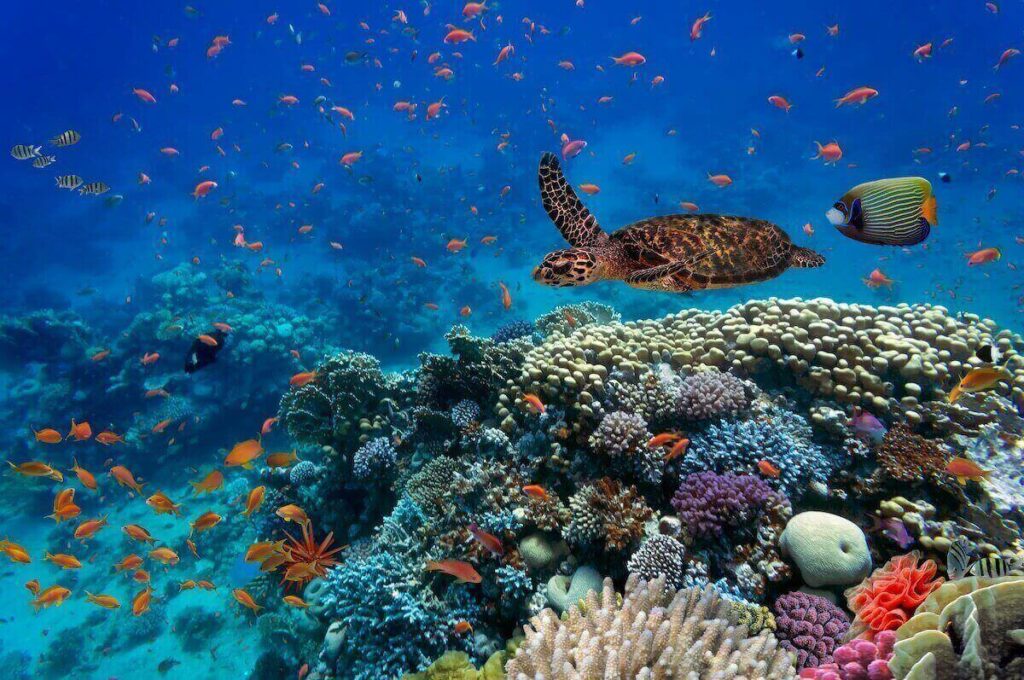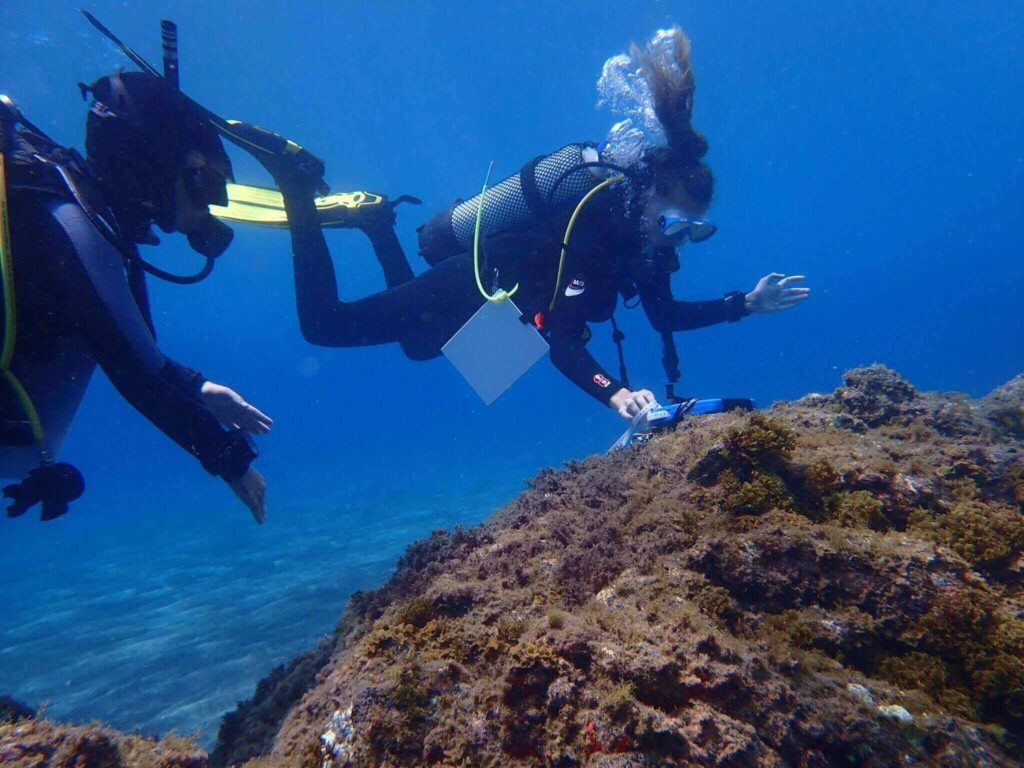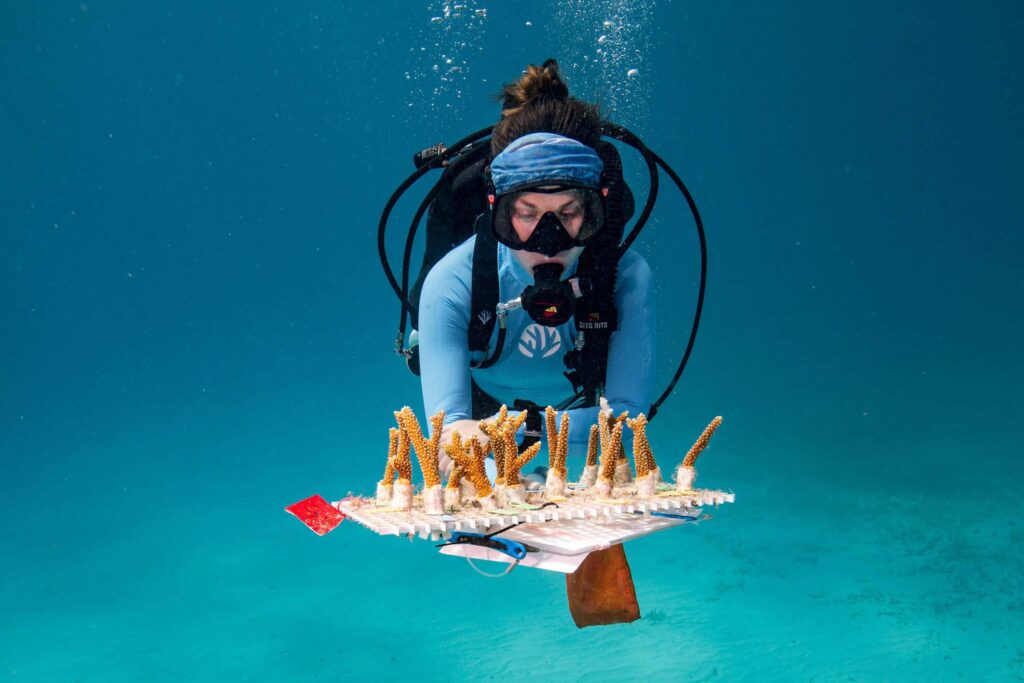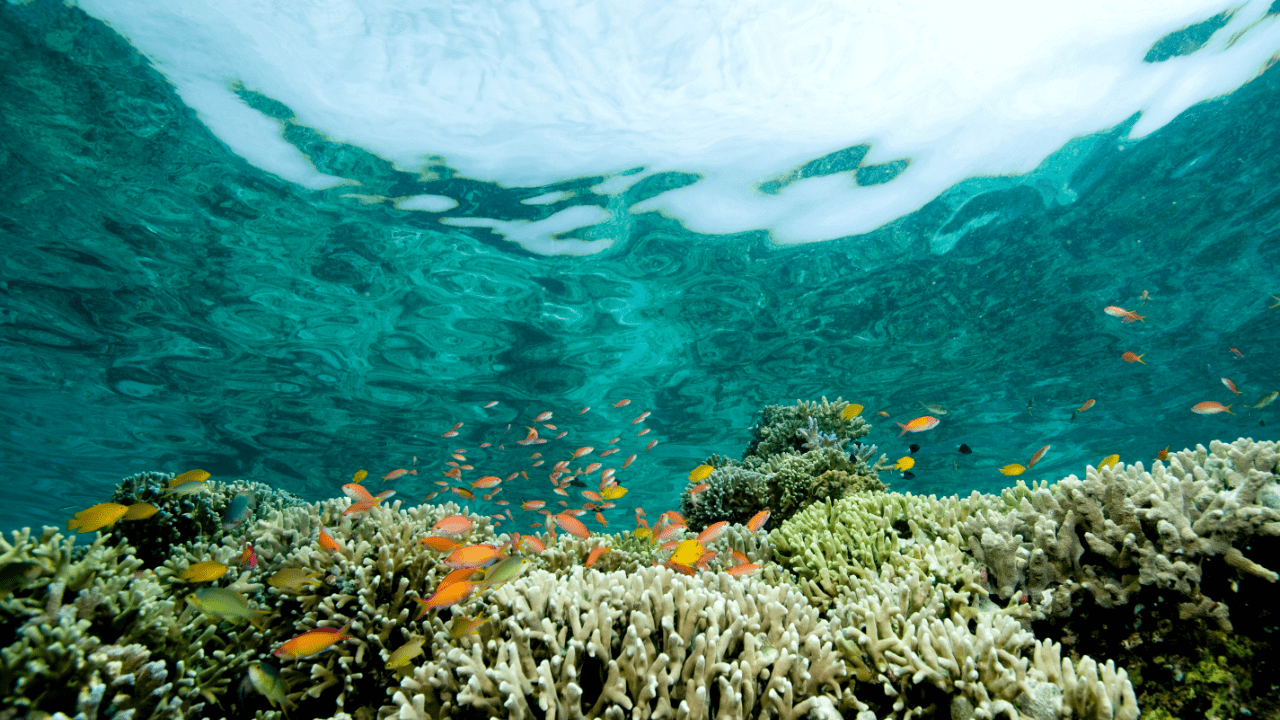Coral Reef Reforestation Programs: Restoring Ocean Ecosystems
One of the most beneficial areas in terms of social and environmental impacts in the modern world is coral reef reforestation programs.
Thanks to these programs, damaged coral reefs are repaired and replanting processes are initiated. So why is such an application done and why are investments made in such an area?
Coral reefs are ecosystems that generally consist of the skeletons of corals living in warm and shallow seas. Corals usually form reefs in the form of colonies on the seabed and are very rich ecosystems in terms of biodiversity.
It creates a suitable ecosystem for the life of many different marine creatures and in this respect, it enables the development of areas such as tourism and fishing.
Damaged coral reefs are repaired thanks to coral reef reforestation programs. In these programs, establishing coral nurseries, creating artificial reefs and growing more resistant coral species are common practices.
Ocean ecosystems are revitalized thanks to coral reef reforestation programs. In this way, the fish population in the region increases and the seabed regains the desired health.
Since a large portion of the world’s oxygen is provided by corals, these types of investments and projects make significant environmental contributions to our ecosystem in terms of sustainability.
What Is Coral Reef Reforestation And Why Is It Important?

Simply put, coral reef reforestation is the process of replacing damaged or dying corals with new and healthy ones. In this way, the natural growth processes of corals are supported. Corals often serve as homes for marine life and offer the advantage of preventing coastal erosion.
Coral reef reforestation projects are critical for both financial development and ecological sustainability while protecting marine biodiversity and supporting tourism and fishing areas for people in coastal areas.
Many investors who are sensitive to sustainability issues are interested in projects in this area. In order to live healthily on our planet and preserve the ecological balance, investing in coral reef reforestation projects should be the responsibility of both individuals and institutions.
The main reason why coral reef reforestation is important is not financial concerns. The ecological effects of coral reefs, which are the largest source of oxygen in the world and the provision of marine biodiversity, are much more important motivations.
In the near future, the effects of problems such as climate change will be more apparent and it may be too late not to invest in coral reef reforestation today. This is the main reason why many different institutions, states and associations develop projects in this area.
Key Techniques Used In Coral Reef Reforestation
The techniques frequently preferred in the coral reef reforestation process can be listed as follows:
- Nursery: In this technique called coral nurseries, corals are grown and then planted on reefs after a while.
- Planting Coral Crumbs: In this common technique, healthy coral pieces are usually collected and planted in suitable habitats.
- Electric Restoration: In this technique, where electric current is usually used, the growth rate of corals is increased.
- Genetic Diversity: In another common technique, the method of providing genetic diversity, coral species known to be more resistant are identified and planted.
Thanks to these basic techniques, institutions manage projects that have both financial and environmental consequences for the ecological balance in the coastal areas they determine.
Divers descend to the points where coral reefs are located and collect fallen, broken or damaged coral pieces and put them in jars filled with seawater that they take from the bottom layer.
Then, these jars are taken to the boat by divers and stored in special cabinets to maintain a temperature of 15 degrees.
Corals are key to the formation of habitats and life underwater. Therefore, the increase in coral areas, the shelter, reproduction and nutritional needs of marine creatures contribute to the preservation of biodiversity.
Another name for coral reefs is ‘Rainforest of the seas’. In addition to providing shelter, reproduction, refuge and food areas for thousands of fish species and oxygen-producing organisms, corals also contribute to the terrestrial ecosystem.
Challenges Faced By Coral Reef Reforestation Programs
In today’s conditions, implementing coral reef reforestation projects requires a significant amount of capital and environmental awareness. I can also remind you that there are many difficulties in this process. I can list the most common difficulties as follows:
- Climate change: The ecological balance of the oceans is disrupted, and warming and acidification usually make it difficult for corals to survive.
- Pollution: Plastic waste and agricultural chemicals, which are increasingly increased by industrialization, unfortunately, cause pollution of nature and make it impossible for corals to grow.
- Natural Disasters: Coral reef reforestation processes may be interrupted due to natural disasters such as hurricanes and tsunamis.
- Financing problems: Coral reef reforestation projects usually involve processes that require high costs and require constant allocation of resources.
In addition to these difficulties, people’s sensitivity and knowledge can also be a challenge in coral reef reforestation processes.
Communities that do not have sufficient knowledge on this issue can unfortunately continue to take this issue seriously despite its long-term negative consequences. Therefore, campaigns should be prepared to create global awareness in this area.
How Coral Reef Reforestation Supports Marine Biodiversity?
Coral reef reforestation projects are of vital importance for marine biodiversity. Reefs provide habitat for thousands of different species in the oceans and seas. These include hundreds of different species of fish, shellfish, and other marine organisms.
Thanks to such projects, these ecosystems are created and the balance in marine ecosystems is maintained. The direct contribution of coral reef reforestation applications to marine biodiversity and the increase in fish stocks have encouraged both states and institutions to invest in this area.
Many institutions and brands from different parts of the world have allocated resources to support projects in this area. The fact that sustainability and ecosystem problems will become even more important in the future makes investments in this area more meaningful today.
Coral reef reforestation is an area that should be of interest to sensitive investors who care not only about commercial profitability but also about the environmental and social benefits of an investment project.
Two-thirds of the oxygen in the atmosphere comes from the sea. In other words, the source of two out of every three breaths we take is the sea.
The source of oxygen for the sea is primarily marine life-based creatures such as coral reefs that we work with. However, due to climate change, overfishing, pollution of the environment and oceans worldwide, coral reefs are in danger of extinction.
The Role Of Technology In Coral Reef Reforestation

The increasing development and affordability of technological opportunities also facilitate coral reef reforestation applications.
Technology is used as a very important element in coral reef reforestation projects that require large investments today. Both technology and digital solutions constitute contemporary coral reef reforestation processes.
One of the first examples of technology used in coral reef reforestation processes that comes to mind is 3D printing technology. Today, the development of 3D printers has made it possible to create artificial coral reefs.
New technologies such as remote sensing and diving robots have also eliminated the risk of human life in coral reef reforestation processes and made the processes more optimized.
Observing ocean conditions remotely through a human without diving makes the process easier. In addition, thanks to technological developments in the field of genetics, it is possible to develop more resistant coral species.
In the near future, coral reef reforestation processes will be completed with equipment that uses GPS and robot systems completely, without requiring even a single human force.
How Climate Change Affects Coral Reef Reforestation Efforts?
You may have heard that coral reefs are an important part of the world’s oxygen resources. But are these reefs continuing their lives in the most balanced and healthy way possible? No.
Climate change, one of the most popular environmental problems today, creates problems in many areas. One of these areas is coral reef reforestation processes. Climate change, which causes coral reefs to be damaged and unable to survive naturally, directly affects this area.
Due to climate change, corals do not renew themselves periodically and rising temperatures prevent corals from bleaching. In addition, ocean acidification occurs due to rising sea temperatures, which destroys the environment needed for coral skeletons to form.
Due to climate change, natural disasters such as sea level rise and storms directly negatively affect coral reef reforestation processes.
Since climate change will give bigger signals in the future, those who invest in coral reef reforestation projects today will reach many returns both financially and environmentally.
Global Success Stories In Coral Reef Reforestation
Coral reefs are not an ecological issue that should only be on the agenda of certain countries.
It is an important issue for many countries from different parts of the world and has global effects. For this reason, many different coral reef reforestation projects continue to be developed on a global scale.
I can give some examples of successful coral reef reforestation processes from different parts of the world. Successful coral reef reforestation projects are managed in coastal countries such as the Bahamas, Australia, and Indonesia.
While electric coral, which is a common coral reef reforestation technique, is cultivated in the Bahamas, applications that increase genetic diversity are carried out in the Great Barrier Reef basin in Australia.
How Communities Contribute To Coral Reef Reforestation?
Coral reef reforestation projects are a case that is on the agenda of not only institutions and states but also local communities. Communities usually have a very decisive effect on such projects. Fishermen and divers in particular make great contributions to coral reef reforestation processes.
Providing training in this field and raising awareness in different coastal countries of the world will also reduce pollution in the long term.
If many businesses providing services in the tourism sector allocate certain parts of their income to coral reef reforestation projects, there will be advantageous results for them in the medium term.
It is very important for people to be informed about this issue and to understand the importance of coral reefs for all living things on our planet. For this, responsibilities fall not only on institutions but also on individuals and communities.
Funding And Investment In Coral Reef Reforestation Programs

Reforestation of coral reefs can be a financially profitable investment due to its positive effects on tourism and fisheries, but of course the main motivation should be environmental impacts.
In recent years, sustainability-focused projects have attracted great interest from investors. Such investment projects are important not only for financial profitability but also for social and environmental impacts. Coral reef reforestation projects are a good example of this.
Many investors from different countries of the world support coral reef reforestation applications. Generally, such projects are managed with state funds, corporate companies, and funds from environmental associations.
In addition, institutions such as the UN, which are important for international diplomacy, periodically allocate resources to support such projects. Many global broadcast channels support its promotion.
Institutions usually carry out coral reef reforestation projects with carbon credits and green financing applications. Increasing the number of coral reefs is a good investment model not only for the purpose of commercial gain but also for its social and environmental impacts.
Future Prospects For Coral Reef Reforestation Initiatives
Although coral reef reforestation projects are popular today, I think they will become more important in the future. Because I predict that the effects of environmental problems such as ecosystem balance, climate change, and global warming will be felt more clearly in the future.
Coral reef reforestation projects offer solutions to minimize the ecological problems that await us in the future. Thanks to the rapid advancement of technology, more practical, convenient, and easy coral reef reforestation methods are emerging.
In addition, people reaching global awareness on this issue will make the importance of coral reefs known to everyone. In the future, people will be more concerned with ecosystem problems and will allocate more resources to invest in this area.
However, in order to benefit most effectively from coral reef reforestation processes in the future, it is very important to allocate resources today for the solution of environmental problems that concern us all, such as climate change and global warming.
See you in the next post,
Anil UZUN
